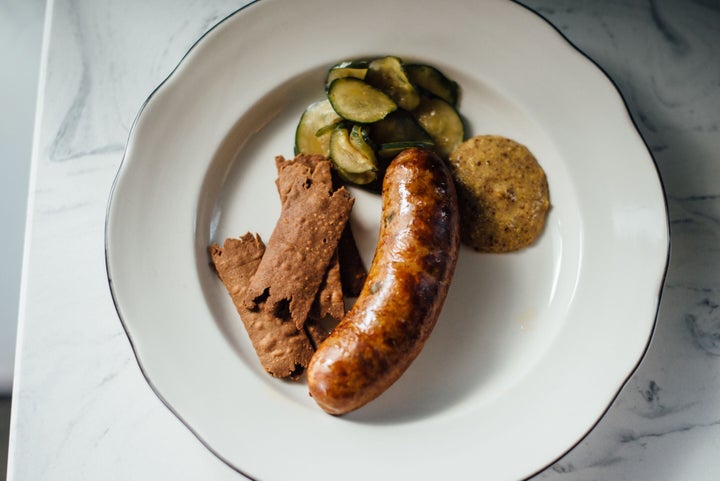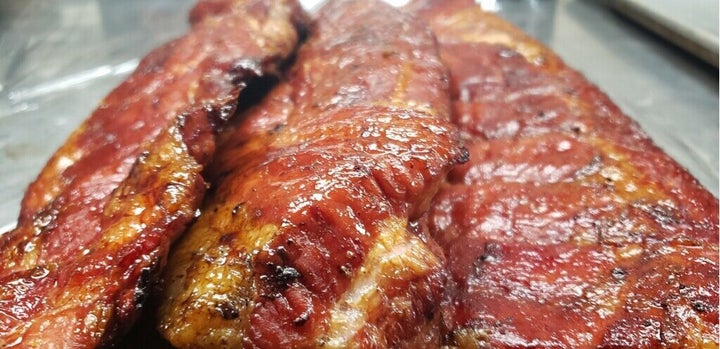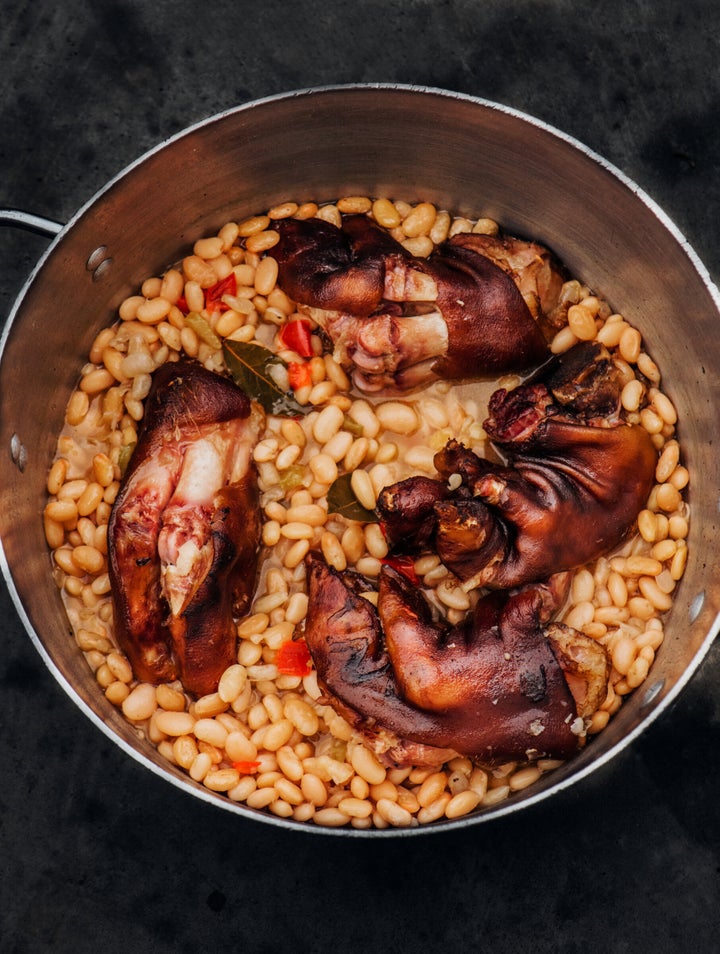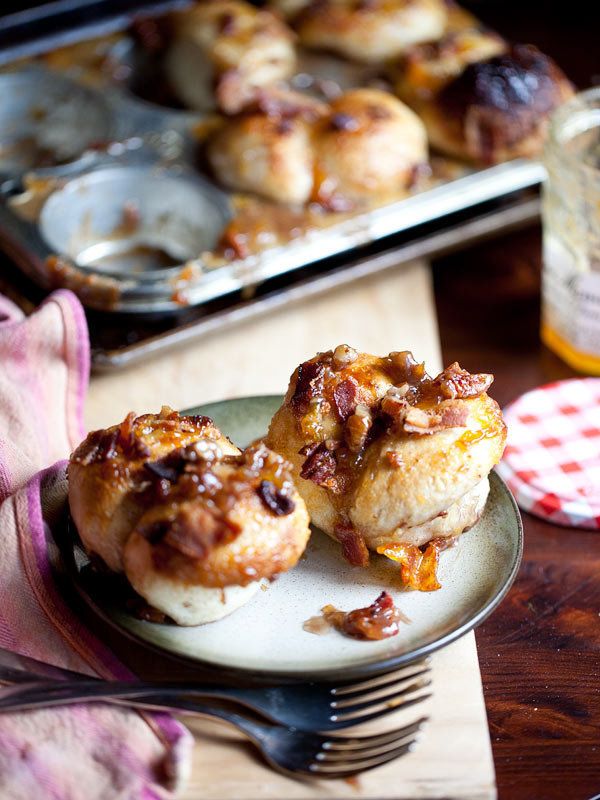In a world where we’re constantly told to eat less meat and be more responsible with the meat we do eat, eating nose-to-tail is highly encouraged. And when it comes to whole-hog cooking, Southerners are the masters.
We talked to four Southern chefs who shared their favorite underused parts of the pig, from trotters to ham hocks.
Skin, aka Cracklins
“Cajuns have been going whole hog before it was a buzzword,” James Beard award-winning chef Isaac Toups told HuffPost. Toups is well known for selling the most sought after cracklins in the South at his New Orleans restaurant Toups’ Meatery. Cracklins, also called grattons, are deep-fried chunks of pork belly and skin. ″If I could only eat one Cajun food for the rest of my life, it would be cracklins,” Toups said.

Toups trains chefs at his restaurant how to render fat from the pork belly into lard, and how to finish frying the cracklins in peanut oil, noting that you can make the dish even if you only have the skins.
Toups learned the art of using all parts of the hog in the field at an enduring Southern tradition, the boucherie. During a boucherie, a large group gathers, slaughters a hog and cooks and smokes all parts of the animal immediately on site, according to Toups. A prayer is said to show respect for the animal’s life and a Cajun band plays. In his cookbook, “Chasing the Gator,” Toups writes that boucheries were born out of necessity — neighbors helping neighbors in slaughtering, butchering and cooking in days with little refrigeration.
“Cajuns are resourceful. We use what we have and don’t throw out anything. In a boucherie, you don’t let anything go to waste,” Toups said. His long held memories of the boucherie start with his father. “I remember my father killed a wild hog. We are not trophy hunters, so naturally we roasted it over a wood fire and shared with hunters. Growing up cooking whole hogs was something done on the regular. It taught me the importance of family gatherings.”
Cheeks
Chef Loreal Gavin, known as “The Butcher Babe” on Season 10 of “The Next Food Network Star,” is a native of Lafayette, Louisiana. She was raised by her grandmother, who came from a huge family and taught her frugality: “You can make something out of nothing when you cook with love,” she’d tell Gavin.
In “The Butcher Babe Cookbook: Comfort Food Hacked by a Classically Trained Chef,” Gavin uses pork cheeks in her recipe for Peaches and Cheeks. “I learned to use cheeks in fine dining,” Gavin said. “Being frugal has become a necessity in many fine dining kitchens, as seasoned diners want to put their ethics where their mouth is.”
Cheeks, an often overlooked part of the animal, are “small, egg-like shaped pieces of pork resting inside a thin veil of tissue,” Gavin said. “Cheeks are a tough cut, so they need to be cooked slow-and-low to achieve that feel-good, fall-apart texture. The silky texture and delicate size of the cheeks effortlessly made them a star on any plate, if they were cooked with love and care.”
For her recipe, Gavin said she “felt inclined to marry two soulful ingredients in one dish. Bringing the familiar seasonality of the peaches with the eyebrow-raising use of cheeks just made sense to me.”
Intestines
The boucherie also taught Toups how to create another of his favorite dishes, boudin, a Cajun sausage made from pork, rice and liver. “There’s not a single part of the pig I don’t enjoy working with, but if I had to choose, I’d say the guts are my favorite,” he said. “When you butcher a pig, you remove the guts carefully. You save the lower intestines for boudin.”

You can make boudin, which is seasoned with tons of garlic, even without natural hog casings. The meat can be scooped into balls and fried, or used in scrambled eggs or burritos.
Another way to prepare the intestines is by making chitlins. According to Southern Living, chitlins ― intestines boiled down with vinegar and served with hot sauce ― were historically left behind for slaves while slave owners lived “high off the hog.”
Chitlins are a regular menu item at iconic Atlanta cafe The Busy Bee. “They’re part of the African American heritage, but many other cultures prepare them too,” owner Tracy Gates recalled. “When it came time to cleaning the chitlins, the children got out the garden hose. You have to grow up around chitlins to appreciate them.”
Neck
Tuesday’s special is neckbones at The Busy Bee, where Gates proudly serves authentic Southern scratch cooking to customers who include locals, travelers, celebrities and politicians seeking comforting soul food classics. (Joe Biden visited in June, and the cafe served as a hub during The Civil Rights Movement.) The cafe is an historic place where food and community are king. It opened in 1947, and Gates said it’s the only business in the neighborhood that began during segregation and still exists today.
Neck bones, also called “shine bones,” are slow cooked at the restaurant with garlic, red pepper and vinegar until they are sticky on the outside and juicy inside. Gates said older generations grew up around this food, but young people come in wanting to try it.
“This traditional food is still very relevant today,” Gates said. She hires cooks who grew up cooking with their families from a young age. “With that background, cooks are easy to train. Then, it’s all about teaching them about volume and taste and understanding how seasonal changes affect the products.”
Gavin is also a fan of pork neck bones, likening them to oxtail. “Imagine a ring of oxtails all in a circle, all that collagen. Italians love to use it in a pot of traditional red sauce to give it body, flavor and thicken the sauce.”
Rib Tips
Far from the fields of Cajun country, in Lemon Grove, a suburb of San Diego, barbecue master Brad Cooper smokes some of the most savored, sought after barbecue in Southern California at his restaurant, Coop’s West Texas BBQ. He’s proud of this “hole in the wall,” which has earned national recognition and gained customers worldwide who seek out his rib tips.

Tips are the short, meaty, well marbled sections of rib attached to the spare ribs usually trimmed off when preparing St. Louis-style ribs. They’re often thrown away, but Cooper salvages these bits and creates something special, smoking them all day with mesquite and red oak to enhance their sweetness. He cooks up about 200 pounds each day in his brick smoker and serves them on “Rib Tip Tuesdays.” “The meaty cartilage is so succulent,” Cooper said with a smile.
Ham Hocks (Knuckles)
You can find smoked ham hocks on the menu at The Busy Bee. Gates buys them deep smoked from a vendor in North Carolina and slow cooks them until very tender. “Ham hocks used to be eaten every day by older generations, but that has changed. I listened to the customers and noticed that people coming to Atlanta were looking for old Southern favorites. We keep them on the menu seasonally to please our customers,” Gates said.
Trotters (Feet)
Toups slow cooks trotters (pigs’ feet) in a Dutch oven to create a base for broths and stocks. “Trotters make some of the best broths and stocks. From gumbo to ramen, trotters are going to have the best collagen-to-fat ratio for any enriched broth soup or gravy.” He recommends cooking them with beans, which are “great for sucking up excess amounts of fat and richness,” he said. He likes to serve the stew over a slice of white bread with a kick of Sriracha.

Home cooks can find inspiration from these chefs who put their creativity, hearts and history into making something out of nothing and continuing the traditions of their roots. Next time you’re at the butcher, consider a new part of the pig.
